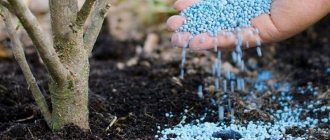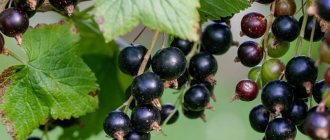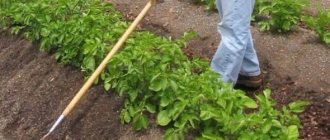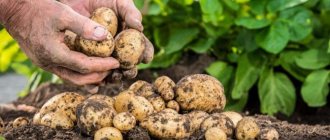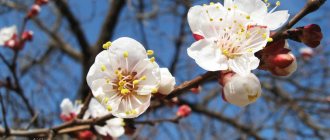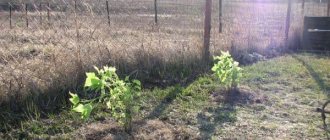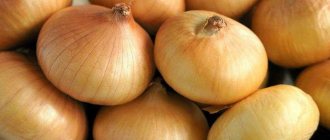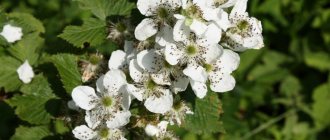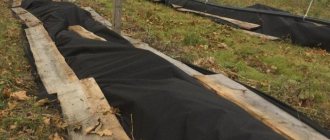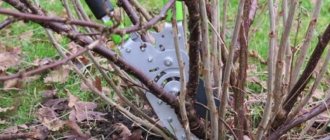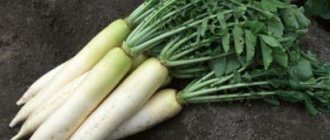Experienced gardeners know that feeding pumpkins allows you to get a bountiful harvest of sweet fruits. However, in the vast majority of cases, rarely does anyone think about it.
Dear readers! For you, we have created communities on social networks in which useful articles and interesting ideas are published several times a day! Subscribe and receive useful content in a convenient format!
In this article we will tell you about what microelements pumpkin needs for better growth and abundant fruiting. Here you will find effective fertilizers and their application schemes.
What microelements does pumpkin need?
In general, pumpkin can be called an unpretentious plant, however, competent and timely feeding will not harm it.
Pumpkin roots go deep into the soil, where they receive the main nutrients. Thus, feeding pumpkin is important for enriching the soil with microelements and maintaining its fertility.
First of all, like any other plant, pumpkin needs a complex of essential microelements, namely potassium, nitrogen and phosphorus.
Humic acids will also be beneficial for the plant. They can be obtained from potassium humate, Gumi-Omi or Gumi Kuznetsov.
It is important to saturate the culture with iron, bromine, manganese, zinc, molybdenum and other elements. They are usually included in complex “store-bought” fertilizers. Therefore, do not disdain them when feeding plants.
IMPORTANT! 15-20 days before harvesting, you need to stop applying fertilizers. Otherwise, it will affect the taste of the pumpkin.
How to feed pumpkin seedlings
In the northern regions, the crop is sometimes grown through seedlings. Accordingly, the question arises, how to feed pumpkin seedlings?
Use complex fertilizer. Let's imagine the general formula of the recipe.
For a liter of water you need 100 ml of mullein, half a teaspoon of superphosphate, the same amount of potassium salt and ammonium nitrate.
Fertilizing is carried out during the formation phase of the first pair of true leaves.
ON A NOTE. If you grow pumpkin without seedlings, add 100 grams of ash to the planting hole.
Preparing pumpkin beds
When preparing beds for pumpkin crops, the area is not only dug up, but also treated with fertilizers. When feeding a pumpkin plot, add:
- 5–6 kg of organic mixtures from compost or manure;
- 20–40 grams of potash fertilizers;
- 35 grams of superphosphate;
- complex fertilizers, the method of application of which is determined according to the instructions.
Areas with heavy soil are treated with ash, which will make the soil looser.
Feeding pumpkin during flowering
When the pumpkin blooms and then forms fruits, the best way to feed it is to apply potassium or complex fertilizers.
For example, Azofoski solution (2 heaped tablespoons per ten-liter bucket).
The second option is to feed the mullein solution. When using this fertilizer, the consumption is 1 cup per 1 specimen.
Also during the flowering period, a yeast solution made from dry or live yeast performs well. Another option is to treat the sheet with a solution of boric acid.
Using organic fertilizers
One of the best fertilizers that is used before sowing seeds in the ground is wood ash. Its advantage is that it activates the plant’s immune system and promotes accelerated growth. The optimal dosage is 1-2 tablespoons per well. The same amount of dry product can be added directly when planting seedlings.
From the second half of the summer season, it will be more useful not to use dry fertilizers, but to water them with solutions based on this component. To prepare it, 200 g of ash is poured into 10 liters of water, covered with a lid and removed to infuse for 3 days. In this case, it is best to use ash from hardwood.
For primary crop fertilization, you can also use simple organic matter:
- if slurry is used, it is diluted with water in a ratio of 1:10;
- Chicken manure is also not recommended to be added in its pure form. It is usually mixed with water in proportions of 1:20.
The bushes are carefully watered with the prepared solutions. The standard dosage is 2 liters for each bush. During ripening, the amount of organic fertilizer can be increased to 3 liters per plant. When applying fertilizer, you need to try to make sure that it does not get on the leaves of the plant.
As an alternative, in the absence of organic matter, you can use industrial biofertilizers or granulated chicken manure. Before using such additives, you must carefully read the instructions. Also, some gardeners replace manure with herbal infusions. Most often, nettle is used as the main component in this case, since it not only saturates the vegetable with the necessary components, but also fights pests. A similar infusion is prepared according to the following algorithm:
- A small barrel (about 200 liters) should be filled one third with stems and leaves of a fresh plant.
- Next, pour cold water into it to the very top.
- Now cover the barrel with a lid and leave to infuse for a week. At the same time, you must remember to stir the liquid every day.
Before feeding, the infusion is mixed with water in a ratio of 1:10 and approximately 500-700 ml is poured under the root system of each plant.
Even organic fertilizers are recommended to be applied after preliminary watering. This will help prevent the risk of burning the root system and ensure uniform saturation of the soil with micronutrients.
What to fertilize when ovaries form
During the period of ovary formation and fruiting, it is best to feed the pumpkin with a complex liquid composition.
For each liter of water you need 2 grams of superphosphate and potassium sulfate and 1 gram of ammophosphate. The consumption of the working solution is 1 liter per bush.
When the pumpkin grows about the size of a tennis ball, feed it with this mixture: for each liter of water, 2 grams of superphosphate and potassium sulfate.
An alternative to such feeding is a ready-made complex. For example, "Kemira Plus". Fertilize at intervals of 10-15 days.
Planting pumpkin seeds in open ground
Planting holes should be prepared in advance with a size and depth of 40 cm:
- pour them with 1-2 liters of warm water;
- Place a layer of dry leaves and organic waste at the bottom of the holes;
- Place a mixture of compost with the top fertile layer on top, making a mound 10-15 cm high;
- Plant seeds into the resulting steam heaps.
The distance between the holes depends on the pumpkin variety and the length of the shoots:
- if the shoots are short, then the distance between plants in one row will be 70 cm, and between holes - 70 cm;
- if the shoots are medium, then 100 by 150 cm;
- if the shoots are long, then 150 by 200 cm.
It is recommended to plant seeds at the end of May or beginning of June to a depth of 4-10 cm, depending on the composition of the soil (the lighter the soil, the greater the planting depth).
Before planting, the seeds need to be soaked in hot water at 50 degrees for 3-5 hours. This will help them germinate faster and get rid of pathogens. 4-5 seeds should be placed in each hole.
After sowing, it is recommended to mulch the soil with grass, peat or cover the beds with covering material.
When the seedlings have several true leaves, you need to thin them out:
- if the pumpkin is large-fruited, then one of the strongest plants should be left in the hole;
- if the pumpkin is small-fruited, then 2 seedlings are left in the hole.
Schemes for feeding pumpkins with fertilizers
Now let's talk about various mineral fertilizers, as well as ready-made complex solutions that can be used to saturate the pumpkin with the nutrients it needs.
Urea
Urea is a source of nitrogen. It is applied during the growth of the vines before flowering. The standard working solution is prepared from 2 tablespoons of the drug and a bucket of water.
Please note that you need to dissolve the granules completely. Therefore, first dilute the product in a liter of hot water, and then bring the volume to the working volume.
Superphosphate
Superphosphate is added repeatedly.
The drug can be used as part of a complex mixture when preparing a pumpkin patch.
But much more often it is used during the second feeding before flowering.
The standard for preparing the working fluid is a teaspoon with granules per 5 liters of water.
Potassium sulfate
Potassium is extremely important for the crop. Especially during the periods of flowering and fruiting. Use it during fruit set.
Nitrophoska
This is an incredibly nutritious composition that should be used when the first shoots appear. It is applied in dry form (2 teaspoons per plant), after which it is mixed with the soil and watered abundantly.
Azofoska
Another NPK preparation with a significant content of potassium, nitrogen and phosphorus in its composition. It can be used both in the form of granules and in the form of liquid fertilizer. Used 2-3 times per season.
Kemira
During the formation of inflorescences and fruit set, you can carry out 2 treatments with Kemira Universal (20 g per bucket of water).
This complex is rich in microelements. Fertilizing can be done by watering at the root and as a leaf treatment.
Oracle
This fertilizer can be used twice - three times per season:
- During the formation period there are 2-3 pairs of true leaves.
- In the growth phase.
- During the period of formation of the first fruits.
In all cases, the working composition is prepared from 5 ml of the drug dissolved in a bucket of water.
Timing for adding fertilizers
When growing pumpkin, it is recommended to apply fertilizer for the first time after 3-5 leaves appear on the sprouts. The plantings are fertilized a second time during the growth of the vines.
If additives are used to feed seedlings, the fertilizer is applied more times:
- the first - 10 days after the sprouts break through the ground;
- the second - 5 days before planting in the garden;
- the third - 2 weeks after transplanting the seedlings into the garden;
- the fourth - when the first lashes appear.
It is worth considering that such recommendations are considered general and the frequency of fertilizing is calculated taking into account the initial state of the seedlings and the conditions in which they grow.
It is recommended to feed pumpkin in open ground for the last time in August, 15 days before the expected harvest. If you do not stop adding the additive at this time, the vegetable pulp will be hard and the taste will deteriorate.
How to foliar feed a plant
The plant can also be sprayed with nutritional compounds. But it is important to remember that the amount of the active drug should be reduced by at least half compared to root fertilizer.
The second important point is processing time. You need to spray the plant either in the morning or in the evening, when there is no scorching sun.
Firstly, this way liquid fertilizers will not evaporate, and, secondly, the plants will not get sunburn on their leaves.
ON A NOTE. Spraying is best done when pumpkins are blooming and bearing fruit. This way they will be most effective.
Why fertilize your pumpkin?
This “sunny” vegetable has an excellent appetite, absorbing large amounts of nutrients from the soil. Pumpkin needs light and fertile soils; if its bushes grow on poor soils, then you will not get a good harvest. Therefore, it is important to apply fertilizers not only during the growing process, but also in advance, when preparing the beds.
Powerful plants with a branched root system need a large feeding area, otherwise the fruits will set poorly and gain weight. Fertilizing increases productivity, fruits ripen faster and have an excellent taste.
IMPORTANT! Pumpkin in open ground should be planted after onions, root vegetables, cabbage, and legumes.
Gardeners must remember to maintain proportions and fertilizer application rates so that the pumpkin grows well and does not turn the benefits into harm for the plants.
Feeding pumpkins with folk remedies
In principle, plantings can be fed using folk remedies. Let's look at which recipes give the greatest effect.
Ammonia solution
You need 2 bottles of ammonia per bucket. This is a good nitrogen fertilizer that should be applied at the stage of vine growth and leaf formation.
Yeast
Yeast has beneficial properties and replaces the growth stimulator. In addition, they have a beneficial effect on soil structure.
For information on how to make a nutrient mixture from dry or live yeast, read our article “How to feed plants with yeast, preparing fertilizer for the garden.”
Herbal fertilizer
Grass clippings can be used to prepare a nutritional nitrogen-containing composition. Pumpkins love this fertilizer.
How to make it is described in detail in the article “How to prepare green fertilizer from herbs, different recipes.”
Spraying with boric acid
During flowering and ovary formation, the pumpkin can be treated leaf by leaf with a solution of boric acid.
The drug has a beneficial effect on flowering and fruit set.
The working solution is prepared from 1 g of the drug dissolved in a liter of water.
During the season, 2 treatments carried out at intervals of one and a half to two weeks will be sufficient.
Common mistakes
- Application of large amounts of nitrogen fertilizers. In addition to the uncontrolled growth of vines and leaves to the detriment of flowering, an excess of nitrogen negatively affects the taste of the fruit and provokes powdery mildew.
- Exceeding the concentration of the active substance leads to illness, loss of ovaries, and deterioration in the taste of the fruit.
- Application of dry fertilizers. You can’t just scatter granules of superphosphate or urea and expect some positive effect. Dry fertilizers must be dissolved in water. And if you get them on leaves and vines, they will cause a chemical burn.
- Spraying is carried out on a hot day. This crop has quite sensitive leaves. Spraying in hot weather will inevitably lead to burns.
- Inaccurate application of fertilizers. When a pumpkin grows, it becomes quite difficult to feed it correctly. After all, you need to water at the root. Irrigation by sprinkling leads to burns and other injuries to the leaves.
Answers to frequently asked questions
What commercial fertilizers can be used to feed pumpkins?
Pay attention to Kemira Combi, which contains additional beneficial microelements. Fertilizer "Juno" is also effective.
Is it necessary to fertilize pumpkins at all?
It is advisable, since pumpkin significantly depletes the soil.
What is better to use, mineral fertilizers or organic?
It is best to alternate them and add spraying with nutritional compounds.
Don't forget about the lashes
When growing pumpkins, the vines (long stems) require special attention. When they have grown to a length of 1 m, they need to be untangled, laid in the desired direction, sprinkled with earth. They do this not so much so that the wind does not break the whip. The fact is that the lashes take root in the places where the powder is sprinkled and the plant receives nutrition in these places.
Therefore, the sprinkled areas require additional watering and fertilizing. When applying fertilizers to the root of a plant, it is important to fertilize the places where it is sprinkled. This material will tell you about growing and caring for pumpkins at home.
The most popular pumpkin fertilizers among gardeners are yeast solution and wood ash. It’s easy to use: 100 g of pressed yeast is diluted in 10 liters of water, 100 g of sugar is added and left to ferment for a week. Then this solution is diluted with another 10 liters of water and you can water the pumpkin by pouring 1 liter of solution under the root.
It will also be useful to learn about how tomatoes are fed with wood ash.
Plantings will respond well to wood ash; it is best to apply it by dissolving it and infusing it in water. And against pests it is worth powdering all the leaves. This should be done when they are still wet after watering or rain. This procedure will repel melon aphids, spider mites, slugs, powdery mildew, and whiteflies.
You can grow a pumpkin in almost any area if you provide this crop with good nutrition several times a season. Both mineral fertilizers and organic matter are suitable for it. Mixing them is allowed. Each gardener chooses which one to give preference to.
Pumpkins have large, heavy and bulky fruits and in order to grow them, the plant must receive many nutrients from the soil. In most cases, the soil is not so saturated with them that the plant can do without fertilizing throughout the entire growing season. Find out when and how to properly fertilize pumpkins in open ground and what mineral or organic fertilizers can be used.
